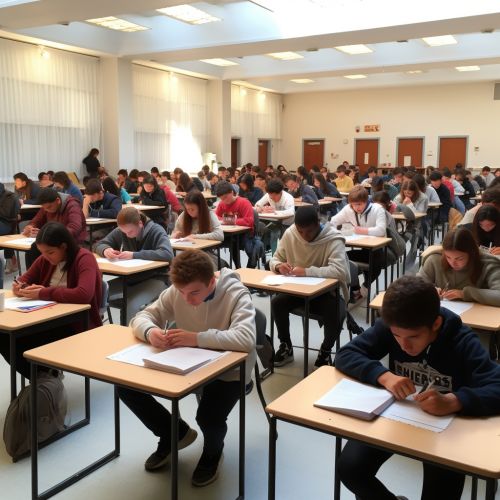Standardized Testing
Overview
Standardized testing is a type of examination that is consistently administered and scored in a predetermined, standard manner. They are designed to have consistent questions, conditions for administering, scoring procedures, and interpretations, which are designed to ensure that the test taker's performance reflects his or her own knowledge or skills, rather than different variables, such as different sets of questions or different examiners. Standardized testing is used in education, professional certification, psychology (e.g., MMPI), the military, and many other fields.
History
The concept of standardized testing dates back to the Han dynasty in China (206 BC – 220 AD), where the imperial examinations were developed to select candidates for specific governmental positions. The system was later abolished in 1905 during the Qing dynasty, but its concepts influenced other parts of the world, particularly in the realm of education.
In the Western world, standardized testing gained prominence in the early 20th century, particularly in the United States, with the advent of the Industrial Age. The need for an educated workforce led to the implementation of standardized tests in public schools to assess students' knowledge and skills. These tests were seen as a means of creating a uniform benchmark for academic achievement.
Types of Standardized Tests
There are two major types of standardized tests: criterion-referenced tests (CRTs) and norm-referenced tests (NRTs).
Criterion-referenced tests are designed to measure a student's performance against a set of predetermined criteria or learning standards, such as the Common Core State Standards in the United States. Examples of CRTs include driver's license exams, school subject tests, and the Scholastic Assessment Test.
Norm-referenced tests, on the other hand, are designed to compare and rank test takers in relation to one another. In other words, the "norm" group is the group of test takers who were previously assessed and whose scores are used for comparison. Examples of NRTs include the American College Testing, the Graduate Record Examinations, and the Law School Admission Test.
Purpose and Use
Standardized tests are used for a variety of purposes in different fields. In education, they are often used to assess the effectiveness of educational programs and school reform efforts. They are also used in certain fields to certify professionals, such as in the IT industry where professionals take standardized tests to demonstrate their competency in certain areas of knowledge.
In the field of psychology, standardized tests like the Minnesota Multiphasic Personality Inventory are used to assess personality traits and help diagnose mental disorders. In the military, the Armed Services Vocational Aptitude Battery is used to determine qualifications for enlistment.
Criticisms and Controversies
Despite their widespread use, standardized tests have been the subject of ongoing debate and criticism. Critics argue that these tests do not accurately reflect a student's full range of abilities or potential. They also argue that standardized tests are not fair to all students, as they do not take into account differences in individual learning styles and speeds.
Moreover, there is concern that standardized testing encourages a narrow curriculum and "teaching to the test." This refers to the practice of focusing instruction on the topics that are most likely to appear on the test, at the expense of other important areas of learning.


